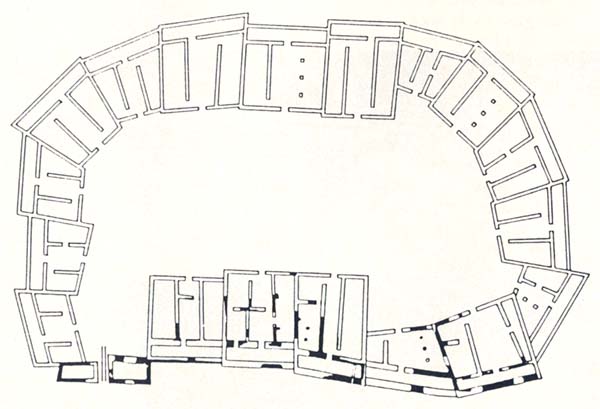Image Details

Tel Aviv University Institute of Archaeology, Beer-Sheba II, page 79
At Tel Beer-Sheva in Israel’s Negev Desert, archaeologists discovered the remains of a circle of four-room houses (drawing). A four-room house—a term developed by Yigal Shiloh—is a simple rectangular structure with a broad room at the back and two or three rooms extending from it.
The broad rooms of these houses from level VII at Beer-Sheva, which dates to the late 11th century B.C., form the outer wall of the settlement. The black segments in the plan are portions of wall actually found; the white walls are conjectured from what was found. Later, this architectural plan developed into a fortification called a casemate wall, a wall composed of two parallel walls transected by short perpendicular walls, creating rooms.
